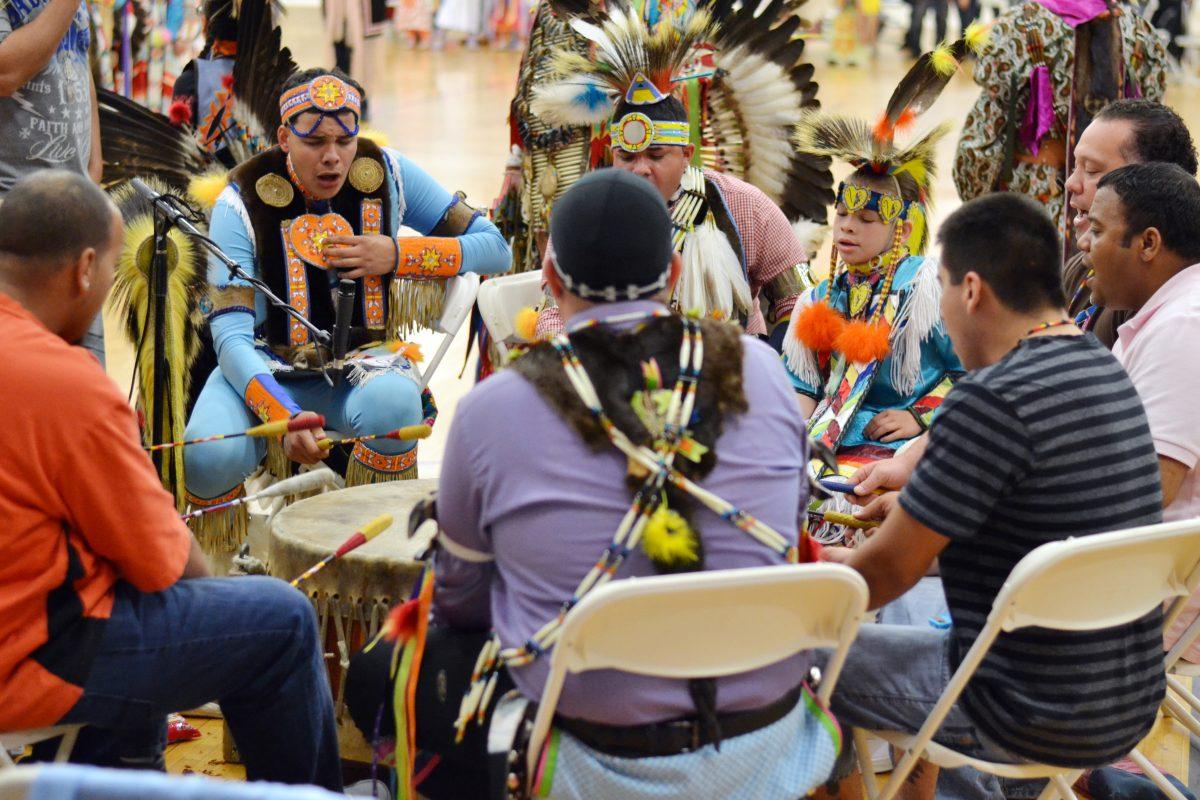The Office of Native American Student Affairs hosted the 23rd annual Native American Powwow on Saturday in Carmichael Gymnasium.
Tribes from across the state, as well as tribes from Oklahoma and other parts of the country, gathered for a powwow to celebrate their cultures and compete in various categories of dance.“This powwow is the biggest competitive collegiate Powwow in the state,” John Locklear, president of the office, said.
During the grand entry, also called an Intertribal, each tribe danced into the arena until the circle is complete. Afterward, all the tribes paid tribute to veterans, living or dead.
“My advice to outsiders who want to attend a Powwow is to educate themselves beforehand,” Locklear said. “Don’t stereotype. Just accept it for what it is.”
Throughout the Powwow the sounds of robust drums could be heard alongside chanting and the traditional music of the people.
Four groups played these drums including, Southern Eagle, Southern Sun, Thunder Voice and Blue Moon, according to Rachel Ensing, an admissions counselor who stepped in for the Native American Student Affairs faculty advisor.
“I really hope that students realize that we have a very strong [Native American] population on campus – our culture is more than what students may have learned in class,” Ensing said.
John Taylor, a junior in bio-medical engineering, said he started dancing in the Men’s Grass category when he was 12. Grass dancing is type of modern men’s powwow dance. Taylor has since been recognized as the 5th best men’s grass dancer in the nation.
Taylor’s dance costume consisted of a white top and bottom overlaid with multicolored tassels to represent “the wind and the grass blowing on the plains.”
Kevin Pusak, a junior in sport management, said he also began dancing when he was 12 because he grew up with a lot of people who were involved. Pusak was dressed in a turquoise top and bottom with golden accents and his “champion belt.”
“My champion belt represents the fact that I am the Sheriff of awesome,” Pusak said. “I like my costume to be representative of my personality.”
Pusak also adorned a long tail of fur that ran from his head to the ground. This accessory is known as an “otter dragger” and its length represents Pusak’s journey as well as his bravery to stand and fight.
John Hess of the KIOWA Oklahoma Plains tribe said he likes to stay traditional in his costume. He wore red pats to represent the fact that he is the first-born son of his family, and he also carries a man’s purse, which look like a pouch, for his personal belongings
“This is my lifestyle,” Hess said.
During the Powwow attendees viewed handcrafted Native American items representative of various cultures at the vending tables. Items ranged from dream catchers, to medicine bags, to rain sticks and were available for purchase.
Cindy Bowman and her husband, Chris, are a part of the Oklahoma Osage tribe and said they’ve been attending N.C. State’s powwow for 20 years.
“We attend powwows all the way from Florida to New York,” Bowman said.
Bowman and her husband handcraft a variety of items such as jewelry, fans made from wood and feathers and medicine bags, which are an important part of Native American culture, Chris Bowman said.
“People use medicine bags to keep items that are important to them to help them when they’re having a bad time,” Chris Bowman said. “ It’s more of a personal thing.”
Sonja Kyler of the Coharie tribe from Sampson County, had a large booth displaying colorful dream catchers, tee shirts, jewelry and mini tee pees. Kyler said she loves making crafts that represent her tribe and culture.
“It’s become a family affair,” Kyler said. “My 22-year-old granddaughter loves helping me make everything.”
Other events throughout the day included a stick ball game, the original lacrosse, and various dance exhibitions and competitions, Locklear said. The powwow ran from noon to 7 p.m.








